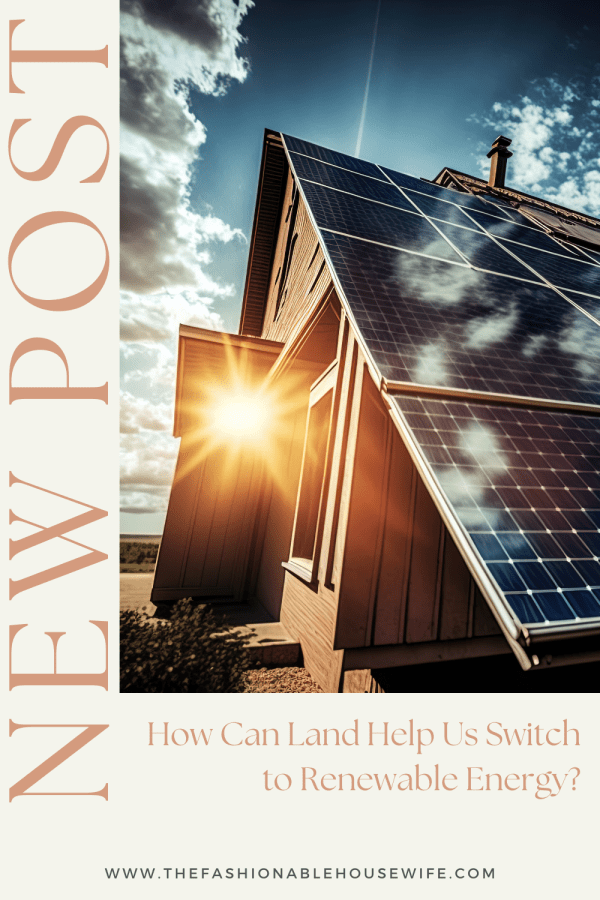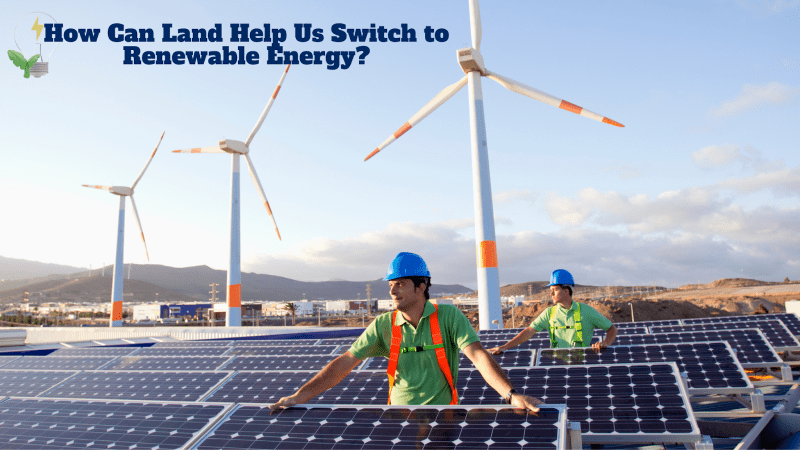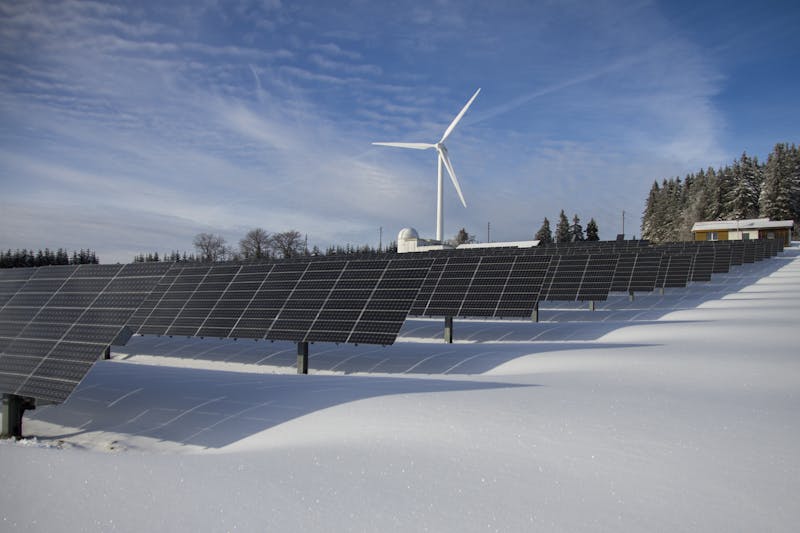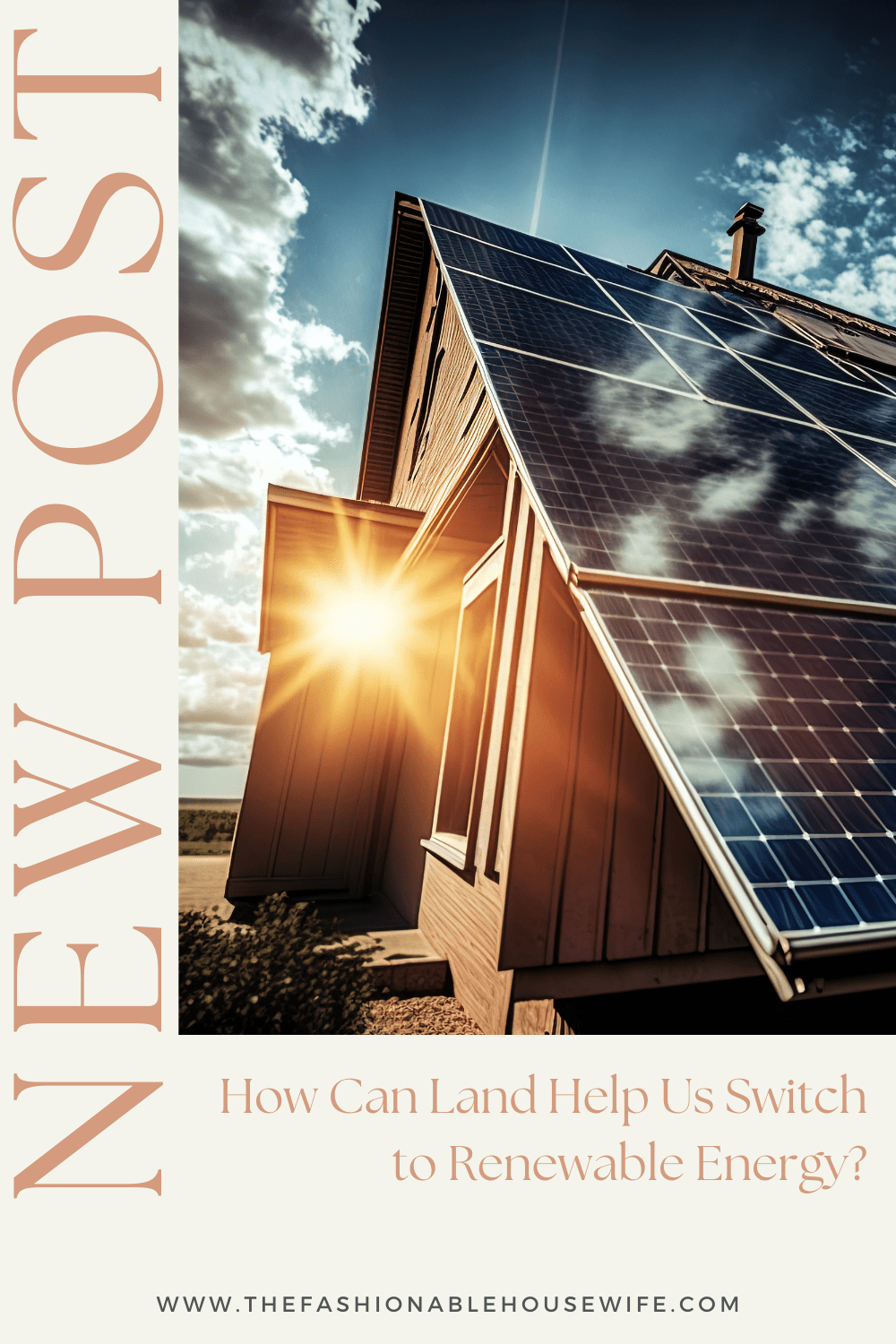How Can Land Help Us Switch to Renewable Energy?

The transition to renewable energy sources is crucial for mitigating climate change and achieving a sustainable future. While technological advancements in solar, wind, geothermal, and biomass energy have been remarkable, The availability and effective utilization of land are crucial for accelerating this transition. Land can play a pivotal role in the energy transition.
In this blog, we’ll explore how different types of land can contribute to renewable energy goals, addressing the potential, challenges, and innovative strategies that lie ahead.

Maximizing Solar Farm Potential
Solar energy has emerged as a frontrunner in the renewable energy revolution, and its land requirements are surprisingly minimal compared to traditional energy sources. Solar development has not significantly conflicted with cultivated agricultural land use, and the land use required is orders of magnitude smaller than land currently in cultivated agriculture.
This compatibility allows for the seamless integration of solar farms into existing agricultural landscapes. One promising approach is an agrivoltaic system that combines solar panel installations with agricultural activities on the same land.
By strategically positioning solar panels above crops or grazing areas, farmers can continue their operations while generating renewable energy. This dual land-use strategy not only optimizes land utilization but also provides additional benefits such as reduced water evaporation and increased crop yields.
If you’re a landowner interested in how to get a solar farm on your land, solar energy companies often lease land for solar farm development. This can be a lucrative opportunity to generate passive income while contributing to a greener energy future.
Wind Energy Exploitation
While solar farms can coexist with agricultural lands, wind energy presents different land use dynamics. The land-use intensity of wind energy can be measured by either the footprint or the spacing between turbines, with the entire spacing area being important for feasibility and environmental impacts.
Successful wind farm installations have been established in rural and coastal areas, where the wind resources are abundant and the land is relatively unobstructed. Case studies have shown that careful site selection and community engagement are essential for minimizing environmental impacts and ensuring long-term sustainability.
Wind farms offer economic opportunities for rural communities through land leasing agreements and job creation, contributing to regional economic development.
For instance, wind turbines can pose risks to bird and bat populations, while solar farms may disrupt local habitats if improperly constructed. It is essential to conduct thorough environmental impact assessments and implement mitigation measures to minimize negative impacts on local flora and fauna.
Geothermal Power Opportunities
Unlike solar and wind energy, which harness energy from the sun and air, geothermal power taps into the earth’s natural heat. This renewable energy source is found in areas with high heat flow, such as volcanic regions or areas with significant tectonic activity.
Geothermal energy has unique land requirements, focusing on specific geological formations and underground reservoirs rather than large surface areas.
Technological advancements in drilling and extraction techniques have made it possible to access geothermal resources more efficiently, reducing the overall land footprint. However, careful consideration must be given to potential environmental impacts, such as induced seismicity and water contamination, to ensure responsible development..
Biomass Energy Production
Biomass energy, derived from organic matter like agricultural waste, forestry residues, and dedicated energy crops, is another promising renewable energy source that relies heavily on land. The extent of biomass development often competes with other land uses, such as conservation and recreation.
Sustainable management of agricultural lands and forestry resources is crucial to ensure biomass energy production does not compromise food security or exacerbate deforestation.
One potential solution is the integration of biomass production with existing agricultural systems, such as cultivating energy crops on marginal lands or utilizing agricultural residues that would otherwise be discarded. Additionally, advancements in bioenergy technologies, such as second-generation biofuels produced from lignocellulosic materials, could help alleviate pressure on land resources.
Integration and Management of Renewable Energy
As the demand for renewable energy grows, integrating and managing various energy sources across different types of land will become increasingly important. Decarbonization scenarios predict a significant expansion of land required for electricity generation, potentially rivaling the growth of urban areas and cropland.
Effective land-use planning and zoning policies will be critical to ensure the efficient and sustainable coexistence of renewable energy projects with other land uses, such as agriculture, conservation, and urban development.
Government policies and incentives can play a crucial role in encouraging the adoption of renewable energy sources and facilitating land acquisition and leasing for these projects. Additionally, community engagement and collaboration with local stakeholders will be essential to address potential concerns and ensure that renewable energy development aligns with the needs and values of the local population.
Economic and Environmental Impact
The transition to renewable energy sources can generate significant economic benefits through job creation and reduced energy costs. Renewable energy projects often require skilled labor for construction, operation, and maintenance, creating employment opportunities in various sectors. Furthermore, the decentralized nature of many renewable energy systems can stimulate local economies and promote energy independence.

The global renewable energy market has experienced remarkable growth in recent years, driven by increasing investments, technological advancements, and supportive government policies. According to a report by Statista, the global renewable energy market size is projected to reach $2,025.94 billion by 2030, registering a compound annual growth rate (CAGR) of 9.6% from 2022 to 2030.
From an environmental perspective, the widespread adoption of renewable energy sources can significantly reduce greenhouse gas emissions and mitigate climate change impacts. However, it is important to consider potential environmental trade-offs, such as habitat fragmentation and biodiversity loss, particularly if renewable energy installations are not carefully sited and managed.
Future Prospects and Innovations
As we look to the future, technological innovations and evolving land-use strategies will play a crucial role in optimizing the integration of renewable energy sources. Advancements in energy storage technologies will enable more efficient utilization of intermittent renewable energy sources like solar and wind, reducing the need for extensive land areas dedicated solely to energy production.
Achieving a sustainable and resilient energy future will require a balanced approach that considers the interconnectivity of land use and renewable energy strategies, fostering collaboration between policymakers, scientists, industry stakeholders, and local communities.
However, meeting the growing energy demand will also necessitate a combination of different renewable energy sources, optimized land use practices, and energy efficiency measures. With continued investment in research and development, along with supportive policies and infrastructure, renewable energy can realistically become the primary global energy source in the coming decades.
By utilizing the potential of various land types for renewable energy production and implementing innovative strategies, we can accelerate the transition to a more sustainable and resilient energy future. The road ahead may be challenging, but the benefits of reduced environmental impact, increased energy security, and economic opportunities make it a journey worth taking.
Interested in exploring the opportunities for renewable energy development on your land? Read this article to learn more about leasing land for solar farm, site assessments, and the potential economic benefits. Together, we can contribute to a greener, more sustainable future.

Frequently Asked Questions
1. What are the main challenges in using land for renewable energy?
The main challenges in using land for renewable energy projects include land acquisition, regulatory hurdles, and local opposition. Obtaining the necessary permits, navigating zoning regulations, and addressing concerns from local communities can be time-consuming and complex processes. Additionally, the competition for land with other sectors, such as agriculture and urban development, can pose challenges in securing suitable sites.
2. How do renewable energy farms impact local ecosystems and biodiversity?
The impact of renewable energy installations on local ecosystems and biodiversity can vary depending on the type of energy source and the specific location. While renewable energy projects generally have a lower environmental impact compared to fossil fuel-based energy sources, they can still cause habitat fragmentation and biodiversity loss if not carefully sited and managed.
3. Can renewable energy sources realistically meet the global energy demand?
Renewable energy sources have the potential to meet global energy demands, but significant technological advancements and efficient land use strategies are required. As technologies such as solar, wind, and energy storage continue to improve and become more cost-effective, the scalability of renewable energy systems will increase.

